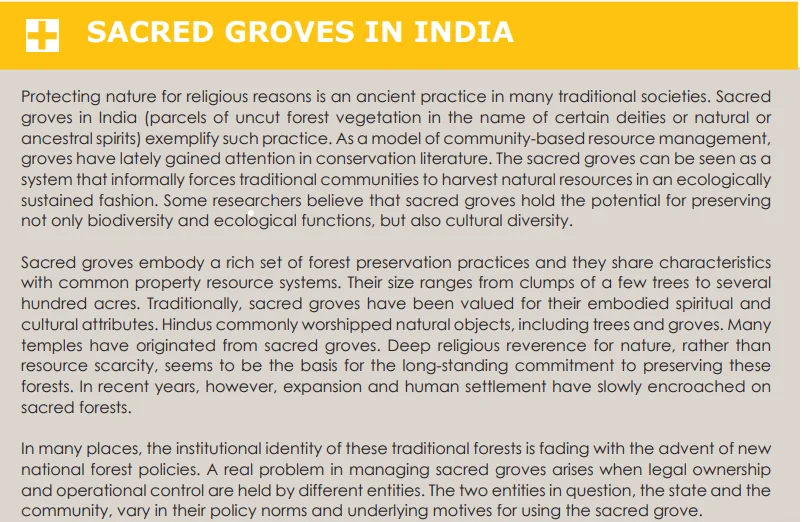![]() 23 Jul 2024
23 Jul 2024
India signed and ratified 1997 Kyoto Protocol in August 2002. At the G-8 meeting in June 2005, India pointed out that per capita emission rates of developing countries are a tiny fraction of those in the developed world. The Indian government is already participating in global efforts through several programs. For example, India’s National Auto-fuel Policy mandates cleaner fuels for vehicles. The Energy Conservation Act passed in 2001, outlines initiatives to improve energy efficiency. The Electricity Act of 2003 encourages use of renewable energy.
Structure: Environmental movements are led by groups of environmentally conscious volunteers working in different parts of the world.
Spatial Human Distribution: Forest movements of the South differ from those of North. Forests in the south are still inhabited, while forests in north are more or less devoid of human habitat.
Resource geopolitics is all about who gets what, when, where, and how. Throughout the Cold War, industrialized countries of the North adopted several methods to ensure a steady flow of resources by deployment of military forces near exploitation sites and along sea lanes of communication, stockpiling of strategic resources, and efforts to prop up friendly governments in producing countries.
Define: UN defines indigenous populations as comprising descendants of peoples who inhabited present territory of a country at a time when persons of a different culture or ethnic origin arrived there from other parts of the world and overcame them.

| Must Read | |
| Current Affairs | Editorial Analysis |
| Upsc Notes | Upsc Blogs |
| NCERT Notes | Free Main Answer Writing |
Various movements focused on the environment around the world, defending indigenous rights, geopolitics related to resources, and efforts to conserve biodiversity highlight the intricate relationship between human societies and natural ecosystems. Various efforts, ranging from local demonstrations against large dams to global treaties like the Kyoto Protocol, aim to balance economic progress with environmental conservation. The continued effort to safeguard biodiversity and indigenous rights from resource exploitation underscores the pressing requirement for united global efforts and policy consistency to attain a harmonious and sustainable future for everyone.
Glossary:
|
| Related Articles | |
| The Law of Conservation of Energy | EUROPEAN UNION (EU) |
| BIODIVERSITY | POPULATION IN INDIA |
<div class="new-fform">
</div>